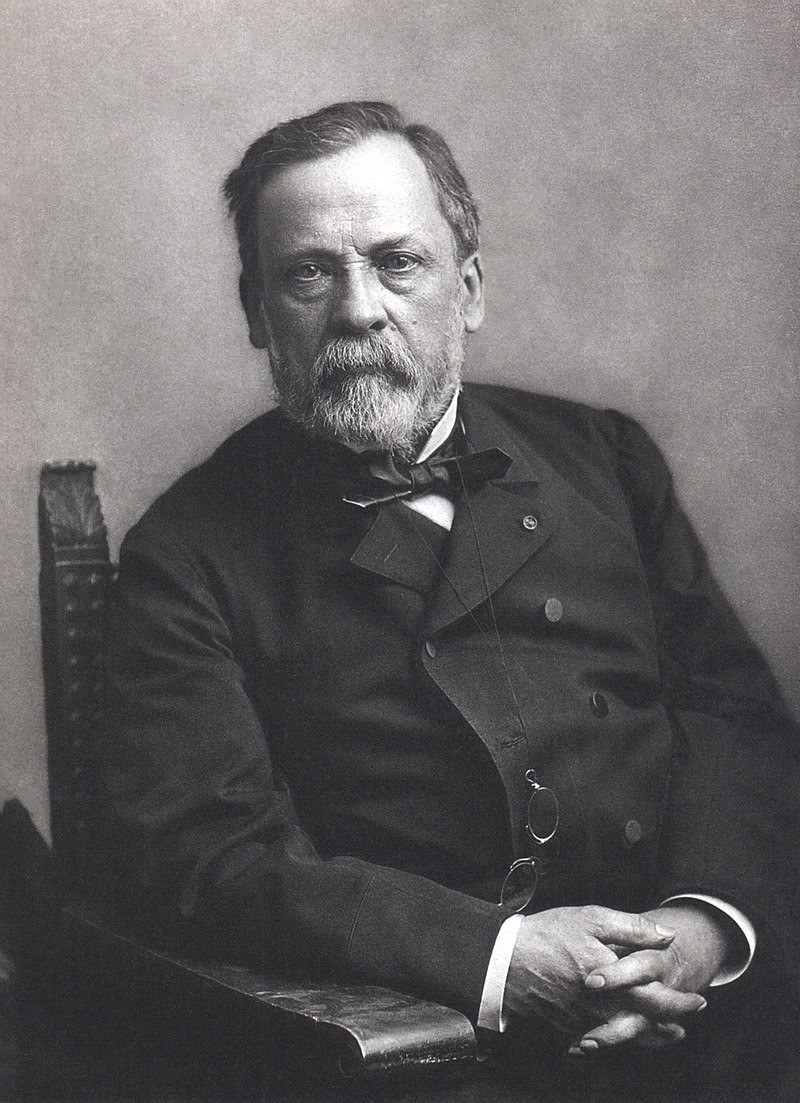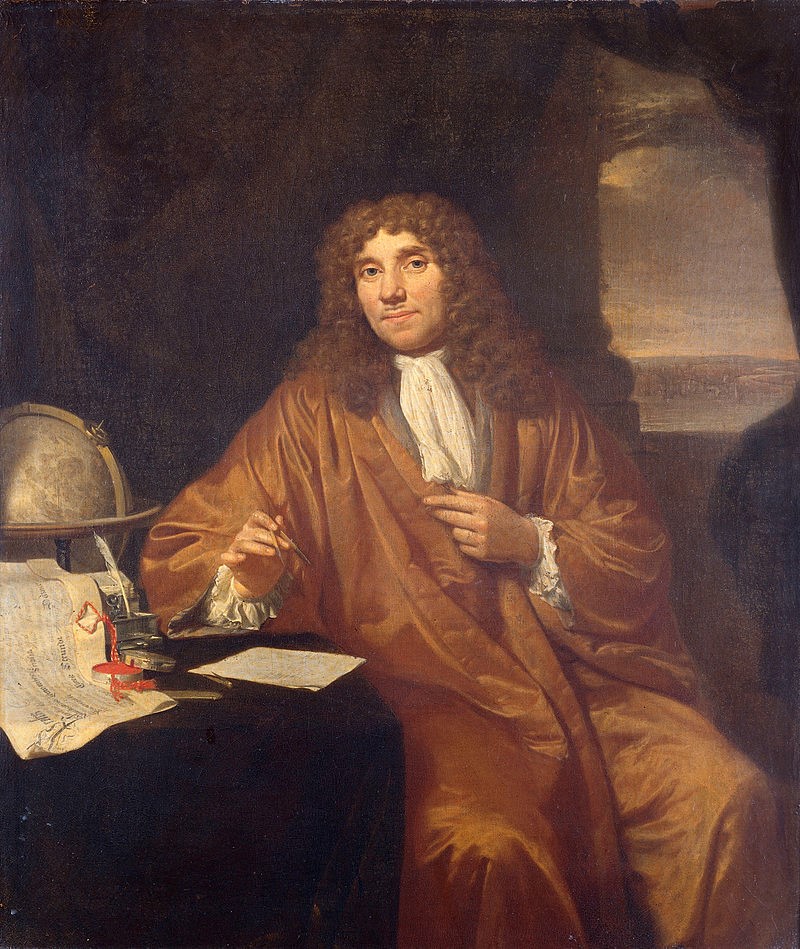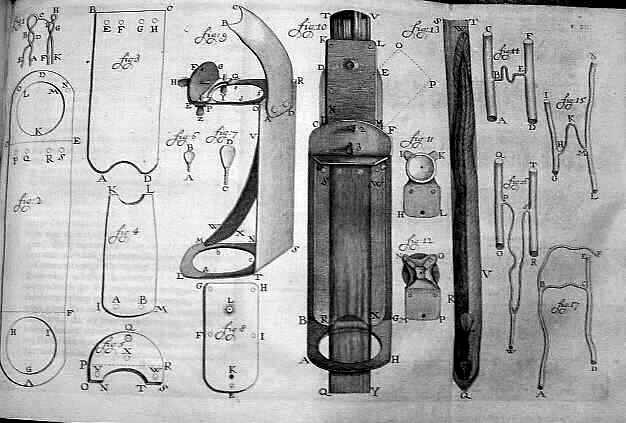What Viruses can teach us?
by
Thomas Hardtmuth, MD, PhD.
December 17th, 2020
As never before, a virus and virologists determine our thinking, our lives, our rights and their restrictions. What is a virus anyway?
The term virus has one-sided connotations. It comes from Roman times and was the name of a poison in the saliva of rabid dogs. This image of the enemy has been handed down and has been activated by Robert Koch (1844-1910) and Louis Pasteur (1822-1895). The microorganisms were unilaterally declared pathogens that make us sick. This is understandable from the experience of the epidemics in those days. But the development of genome sequencing over the past 20 years has opened a new chapter here. This has led to a radically new image of the virus, because we now see completely different lines of development and origins of viruses. Viruses are the basic building blocks of life. Viruses are the original genome of all organisms, the uranium deposit of everything genetic in the world. This brings us away from the pathology concept of viruses. We now see them in an overall context of nature. That viruses are developing something pathological is more of a special case.
Microbiome research, i.e. research into the entirety of microorganisms, is developing rapidly! There are phenomena that astonish us more than provide clear answers. The microorganisms educate us in a new way of thinking. We have to learn to think contextually. How do the microorganisms interact? That requires a new way of thinking. The microbiome sensibly perceives all influences and imprints them like a seismograph: the environment, illness, psyche, stress. There was the primeval biosphere, the original state of the earth, where the whole earth was a homogeneous, vital organism made of interacting single cells. The viruses are the agents of an urbiospheric communication. The virosphere is part of the earth’s organism. In the oceans we have so-called biogeographical provinces, comparable to organs in which certain metabolic qualities are realized. The new marine biology has shown that. We are amazed at the complexity of the microbial world. It is very different and highly individual in every place in the world. Every blade of grass on earth, every cloud, every body of water has its characteristic microbial sphere. What kind of forces are these that shape these highly individual habitats? It seems that the viruses are the regulators of these spheres. They regulate the population dynamics in ecological systems.
What if a virus that belongs in a bat environment leaps into a human environment?
Over 99 percent of all viruses lead a sedentary lifestyle and do not make you sick. Everyone has viruses in themselves that belong to them. Families also have their own common house microbiomes, including their pets. The pathology only begins with the change of host. If suddenly a different environment prevails, animals have to move to other habitats, the “ethereal” balance is shaken, then the risk of disease increases. When the microbiome cannot sound together because it does not belong together, irritation begins. When I take a breath, at least 10,000 bacteria and viruses enter me. The lung surface is highly sensitive, full of immunocompetent cells that “feel” everything that comes in the atmosphere. We do not yet have the language for what we “soul” breathe and perceive.
So do we really live in a larger sphere of life in which the viruses belong?
These microbiospheres in which we are enveloped are like memories of primeval states in which the organisms were not yet so separated. They point us to this ethereal primordial state of a generally living fluid at our body boundaries and to the fact that our organism does not actually stop at the skin. For example: if you inoculate a tomato plant with a parasite, it warns its neighboring plants in a puzzling way. These then produce an antibody for the poison as a preventive measure or send out a fragrance that attracts insects that eat the parasites away. Everything is networked and through microbiome research we are currently approaching a new, expanded concept of organism.
Viruses are regulators of the microbial spheres. They regulate the population dynamics in ecological systems. But in today’s dealings people talk and act differently.
We project our own psychology into nature by declaring the virus to be the enemy. Of course, the viruses play a role in pathology. When a person is sick, the highly context-sensitive microbiome also changes. For example, viral monocultures emerge when disease-causing one-sidedness develops, such as in the huge monocultures of agriculture or through ruthless environmental destruction. The Ebola hotspots in Africa were where the forests were cut down. Then there is violence, war, terror and human exploitation. This is the larger context in which Ebola becomes an indicator of an overall sick system.
So do we need a different relationship to nature, to the living beings with whom we share this earth, in order to overcome this pandemic?
We need a more sensitive coexistence with nature, but also among people. I like to compare that to medieval epidemics. If we only look at the plague in terms of the causative agent, then we have little understood. What happened then was that living conditions changed drastically in early urbanization. The population lived cramped together in the cities without any hygiene. 20 people slept in one room, ate from a pot, no baths, no toilets, no garbage disposal, etc. That is not in keeping with human nature. The epidemics show us that this is not possible. Even today it is worth asking: what is nature telling us now? She wants to wake up so we can look.
Does that mean looking and asking what we have done and how do we fix it?
Of course, we intervene in nature and change ecosystems. This can even be to nature’s advantage, if done thoughtfully and wisely. Diversity and thus health definitely increase when people treat nature with a certain artistic sense. What we are experiencing now is the opposite. A fundamentally new way of thinking about nature must now start otherwise we will experience one catastrophe after another. But this entire state apparatus is very tough. You can see that in the climate crisis. Imagine if we were to invest all the effort, the many trillion dollars that the crisis has cost so far, in meaningful and sustainable socio-ecological projects, also in the third world – it would be a blessing for the earth! David Beasley from the UN Food Fund speaks of enormous famines due to the Corona measures, malaria is also increasing enormously and will claim hundreds of thousands of additional deaths. The distress caused by the lockdown measures is forcing smallholders to go into the forest and cut trees in order to have something to live on. This in turn favors the spread of malaria, because countless puddles form on the deforested rainforest areas, in which the anopheles mosquito multiplies as a vector. Epidemics are not a bad mood of nature, they are self-made; they arise where we destroy the balance of microbial populations in grown ecosystems.
So what can we do?
It is not just about protection, but also about becoming aware of our alienation from nature and overcoming it. Not back to nature, but forward to nature. My actual intention to deal with micro-living beings was the desire to build a bridge to the ethereal, i.e. to the sphere of connectedness that is completely lost to us. We have to develop this term now. The less we do that, the more we are faced with these natural disasters. We have to learn to understand what nature tells us and how we can deal with it adequately. People’s immune systems work best when there is cooperation, fairness, trust. That’s human nature. Then the human is present, and that strengthens immunological health, but not when we walk through the world with fear and distrust.
What is a PCR test? What exactly is being measured there?
The PCR test was developed for genetic diagnosis only. He made the decoding of the human genome possible. Kary Mullis received the Nobel Prize for this discovery, but interestingly warned against using this test to diagnose infectious diseases. The test is too sensitive for that. A single virus can be enough to get a positive result. And we have millions of viruses on one square centimeter of skin, so-called pathogens can also be found in abundance in healthy people. The presence of a virus on the mucous membrane does not say anything about illness. The test measures a gene sequence, but not whether we are sick. The searched gene fragment is duplicated again and again until it becomes detectable. The number of doublings required for this is the yardstick for the viral load. There are many virologists who say that anything that goes beyond 30 doubling steps has no disease relevance. The problem with us is that most tests work with 40 or more and therefore give way too many false positives.
The number of test-positives or “infected” or “cases” according to which freedom restrictions are based, says nothing about how many people are sick?
The term infection is used here in a misleading way. By definition, it means that a person shows actual changes in the sense of a disease through contamination with a microorganism. And that is usually not the case with the so-called corona infected. When we breathe in here now, a lot of coronaviruses go back and forth between our airways. Whether we get sick depends primarily on the organism and not on the virus. We are currently only looking at the virus and far too little at our immune functions.
Does the organism have to be able to deal with the virus?
As I said, most virus contamination does not make you sick. The viruses in our organism usually have sedentary lifestyles and do not multiply in such a way that they destroy the cells. But science is only just slowly beginning to address the question of what viruses naturally mean to us, beyond pathology. With a virus, we pick up a genetic message that the organism perceives, and it does something with it and learns something from it. The major discovery in genetics today is that human genomes were created from viruses. Every real development that a person makes goes more or less through a crisis. We cannot learn anything new unless we also overcome certain difficulties. Sometimes diseases are needed that are important for the maturation of the immune system and our autonomy. Viruses are the stimulators of our genetic development.
Wherever a being can develop according to its nature, it becomes healthy. This applies not only to people, but also to animals, plants, entire ecosystems and also to social communities. The policy is based on mass vaccination. The new mRNA vaccine has just been approved (December 2020).
We basically know far too little about this. With a vaccination of millions of people, you have to know exactly what you are doing. The rapid increase in autoimmune diseases in vaccinated mRNA is a cause for concern. When I give a cancer patient a risky drug, it is easier for me to accept side effects. But not if you want to treat healthy people. High standards are required here. I find it difficult to understand how one wants to identify a solid assessment of long-term risks in such a short time.
What can you recommend?
There are many studies that show how the immune system can be increased. His activity increases by 50 percent if, for example, you walk for an hour in the forest every day. We should help people to get out of the spiral of fear. One can speak of a social immunology, since the immune functions of humans are highly dependent on the social context. The most damaging effect on a person’s immune system, as we know today, are the so-called devaluation experiences, when you give someone to understand that they are of no interest and are not needed. When people are repeatedly excluded and humiliated in this way, their immune systems break down. This is a basic law of social medicine.
The experience of meaning and self-worth are therefore crucial for individual, social and ecological health.
To put it in one sentence: wherever a being can develop according to its nature, it becomes (or remains) healthy. This applies not only to people, but also to animals, plants, entire ecosystems and also to social communities. Such statements are now often smiled at as naive natural romance, but that doesn’t change the fact that they are true.
Thomas Hardtmuth is a doctor, author and lecturer. He has dealt extensively with the questions of virology.

Thomas Hardtmuth, born in 1956, worked at various clinics in southern Germany after studying human medicine in Munich, most recently as senior physician for surgery and thoracic surgery at the Heidenheim Clinic. Since 2012 he has been a lecturer in health sciences and epidemiology at the Baden-Württemberg Cooperative State University. Since 2003 he has published regularly on various medical and scientific topics.

Heinrich Hermann Robert Koch (1843-1910) was a German physician and microbiologist. As one of the main founders of modern bacteriology; he identified the specific causative agents of tuberculosis, cholera, and anthrax and also gave experimental support for the concept of infectious disease, which included experiments on humans and animals. Koch created and improved laboratory technologies and techniques in the field of microbiology, and made key discoveries in public health. His research led to the creation of Koch’s postulates, a series of four generalized principles linking specific microorganisms to specific diseases that proved influential on subsequent epidemiological principles such as the Bradford Hill criteria. For his research on tuberculosis, Koch received the Nobel Prize in Physiology or Medicine in 1905. The Robert Koch Institute is named in his honor.

Louis Pasteur (1822-1895) was a French biologist, microbiologist, and chemist renowned for his discoveries of the principles of vaccination, microbial fermentation, and pasteurization. He is remembered for his remarkable breakthroughs in the causes and prevention of diseases, and his discoveries have saved many lives ever since. He reduced mortality from puerperal fever and created the first vaccines for rabies and anthrax.
His medical discoveries provided direct support for the germ theory of disease and its application in clinical medicine. He is best known to the general public for his invention of the technique of treating milk and wine to stop bacterial contamination, a process now called pasteurization. He is regarded as one of the three main founders of bacteriology, together with Ferdinand Cohn and Robert Koch, and has been called a “father of bacteriology” and the “father of microbiology,” though the latter appellation has also been applied to the Dutch medical doctor and researcher Antonie van Leeuwenhoek (1632–1723).
Pasteur was responsible for disproving the doctrine of spontaneous generation. He performed experiments that showed that, without contamination, microorganisms could not develop. Under the auspices of the French Academy of Sciences, he demonstrated that in sterilized and sealed flasks, nothing ever developed; and, conversely, in sterilized but open flasks, microorganisms could grow. Although Pasteur was not the first to propose the germ theory, his experiments indicated its correctness and convinced most of Europe that it was true.
Today, he is often regarded as one of the fathers of germ theory. Pasteur made significant discoveries in chemistry, most notably on the molecular basis for the asymmetry of certain crystals and racemization. Early in his career, his investigation of tartaric acid resulted in the first resolution of what is now called optical isomers. His work led the way to the current understanding of a fundamental principle in the structure of organic compounds.

Antonie Philips van Leeuwenhoek (1632-1723) was a Dutch physician, businessman and scientist in the Golden Age of Dutch science and technology. A largely self-taught man in science, he is commonly known as “the Father of Microbiology”, and one of the first microscopists and microbiologists. Van Leeuwenhoek is best known for his pioneering work in microscopy and for his contributions toward the establishment of microbiology as a scientific discipline.
Raised in Delft, Dutch Republic, van Leeuwenhoek worked as a draper in his youth and founded his own shop in 1654. He became well recognized in municipal politics and developed an interest in lens making. In the 1670s, he started to explore microbial life with his microscope. This was one of the notable achievements of the Golden Age of Dutch exploration and discovery (c. 1590s–1720s).
Using single-lensed microscopes of his own design, van Leeuwenhoek was the first to experiment with microbes, which he originally referred to as dierkens, diertgens or diertjes (Dutch for “small animals”).Through his experiments, he was the first to relatively determine their size. Most of the “animalcules” are now referred to as unicellular organisms, although he observed multicellular organisms in pond water. He was also the first to document microscopic observations of muscle fibers, bacteria, spermatozoa, red blood cells, crystals in gouty tophi, and blood flow in capillaries. Although van Leeuwenhoek did not write any books, his discoveries came to light through correspondence with the Royal Society, which published his letters.

van Leeuwenhoek’s design of one of his microscopes